#deconstructivist
Explore tagged Tumblr posts
Text

Heinz-Galinski-Schule (1995) in Berlin, Germany, by Zvi Hecker
396 notes
·
View notes
Photo







Gehry House, Santa Monica, USA - Frank Gehry
-
#Frank Gehry#architecture#building#design#modern architecture#contemporary#deconstructivist#post-modernism#quirky#abstract#angles#house#house design#interiors#living room#light#timber#glass#kitchen#usa
251 notes
·
View notes
Photo

Canadian-born American architect Frank Gehry designed the deconstructivist Biomuseo (2014) at Panama City, Panama. The museum's eight galleries showcase biodiversity, geology, biology, and oceanography.
8 notes
·
View notes
Text

Rem Koolhaas and Joshua Prince-Ramus - Seattle Public Library (2004)
#architecture#deconstructivism#deconstructivist#architects#design#art#art history#200s#2004#21st century#seattle
4 notes
·
View notes
Text

Studio Lihan
Tension Instrument
Source
#studio lihan#architecture#postmodern architecture#deconstructivist architecture#architectural design#architizer#archdaily#dezeen#contemporary architecture
74 notes
·
View notes
Text
Zaha Hadid (1950-2016)
زها حديد Zahā Ḥadīd | Dame Zaha Mohammad Hadid DBE RA (31 Oct 1950 – 31 Mar 2016) was an Iraqi-British architect, artist and designer, recognised as a key figure in architecture of the late-20th and early-21st centuries. via W #PalianSHOW
زها حديد Zahā Ḥadīd Dame Zaha Mohammad Hadid DBE RA 31 Oct 1950 – 31 Mar 2016 was an Iraqi-British architect, artist and designer, recognised as a key figure in architecture of the late-20th and early-21st centuries. Born in Baghdad, Iraq, Hadid studied mathematics as an undergraduate and then enrolled at the Architectural Association School of Architecture in 1972. In 2004 she became the…
#ARCHITECT#british#British architect#Iraqi-born#Iraqi-born British architect#Iraqi-British#Pritzker Architecture Prize#radical deconstructivist designs#the first woman#Zahā Ḥadīd#زها حديد
3 notes
·
View notes
Text
i hope that post is comprehensible to anybody besides me. i avoided semiotics almost entirely to try and keep it ground level. but i could go off about deconstructivism too. i won't but i could.
#peter posts#i'd actually have to read deconstructivists texts to do that & that's just not happening this week
2 notes
·
View notes
Text
i really love this. it reminds me of cubism & deconstructivism with the angles and layering. really very cool

Tried something new with the wonderful Mumbo K Jumbo
I was inspired by two things - his wonderful graphic design endeavours which are SOOOOO cool, and this one viktor fanart that's got like equations n stuff on it!!
Anyways, give me your opinions i need them. i NEEEEEED them
<3
#don't have the time or brainspace to find the specific pieces it reminds me of but its really really epic#gives me a similar sense of awe and deconstructing time & space as some of those big famous pieces#picasso's staircase and that deconstructivist tower sculpture that i can't remember the name of atm#and a couple others i can't recall off the top of my head
1K notes
·
View notes
Text

Image from: wikipedia.com
The Cultural Parameters of Design Leadership: Jüdisches Museum Berlin/Jewish Museum Berlin
As the largest museum of its kind in Europe, the Jewish Museum Berlin explores the rich history of Jews in Germany from the Middle Ages to today. Founded in 1933, it proclaimed that Jewish history is living history, but it was closed by the Gestapo during Kristallnacht.
"For some people it brings to mind a broken Star of David; for others it is a bolt of lightning. Many people are left with a feeling of insecurity or disorientation." - Jewish Museum Berlin
"A void cuts through the zigzagging plan of the new building, and creates a space that embodies absence." Studio Libeskind on Jewish Museum Berlin
Today, as one of Germany's most visited museums, it promotes dialogue on cultural identity and resilience. The Jewish Museum Berlin exemplifies how cultural parameters in design leadership can honor history while inspiring a brighter future.
#Jewish Museum Berlin#Jüdisches Museum Berlin#cultural parameters#design leadership#germany#deconstructivist design#living history#zigzagging#voids
1 note
·
View note
Text
Sometimes you just have to get high and have a crisis you've been avoiding for like 6 years.
#watched rhett and link's deconstructivist update video#never heard that term before and went down a rabbit hole
1 note
·
View note
Text

Housing Estate (1987) in Darmstadt, Germany, by Rüdiger Kramm
#1980s#housing#deconstructivism#deconstructivist#architecture#germany#architektur#darmstadt#rüdiger kramm
139 notes
·
View notes
Text
One of the major themes of ‘Ace Attorney’ has always been trust, obviously. Like, this is the most important creed that Mia Fey passed down to Phoenix and from there to anyone he has touched.
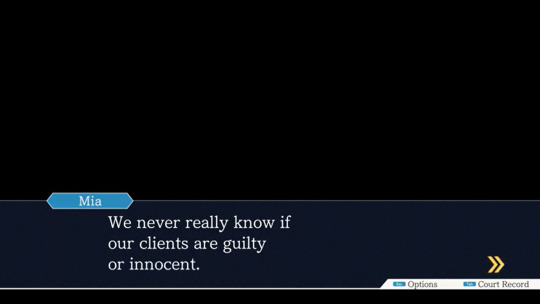
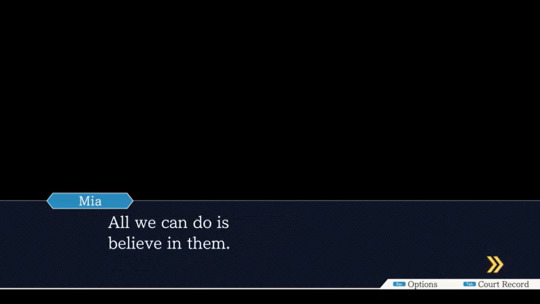

As well as just generally being one of Phoenix’s most important positive qualities.

The entire arc of the first game hinges on the idea of the Power of Trust, with it being a core pillar of Phoenix's relationships with both Miles and Maya.


And even the main gameplay themes of ‘turnabout’ and ‘turning your thinking around’ are linked to this theme of Trust. The whole idea around the narrative of a ‘turnabout’ is that the Defendant seems obviously totally guilty, but the defense attorney proves them innocent by Trusting in their innocence.
And ‘turning your thinking around’ is generally framed as - rather than the general mystery-solver mindset of trying to deduce what has happened from the evidence given - trusting in your client’s innocence and looking for evidence that should be there if they are innocent/that other person is the culprit. Using the Trust in the client as the foundation to build your logic from.
And being such a core theme of the franchise, the games started reiterating on and deconstructing it almost immediately. “Farewell, My Turnabout'' having a Guilty Client feels like the most obvious example, maybe. But actually the game starts casting suspicions on Engarde pretty early on, and most of the emotional turmoil related to him is more of the, like “will Phoenix sacrifice the truth for Maya’s sake” hostage situation stuff.
I think the more important stuff in that case is more about the Phoenix-Edgeworth drama. How Phoenix’ sense of trust, which seems like such an unwavering and unbreakable virtue in the first game, does actually have limits. Phoenix feels that Miles has betrayed his trust by, y’know, running off to Europe and making him think he was dead - and it takes him time to learn how to regain this sense of trust in him.

Meanwhile, Matt Engarde, he considers himself strong because he trusts in no one. In contrast to Adrian, who both he and she herself see as ‘weak’ because of her tendency to blindly trust the person she is dependent on. But at the end, it’s Matt’s distrust in everyone around him that brings on his own downfall.
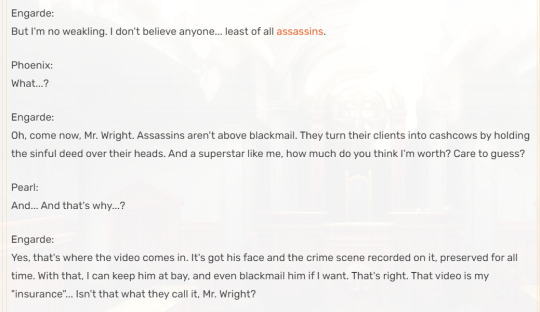
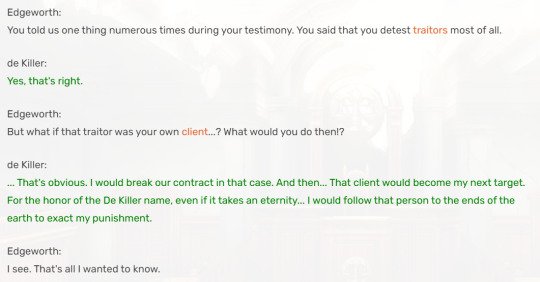
And the game after that adds in Dahlia Hawthorne who is, as Mia Fey’s nemesis, a sort of representation of the dangers of trust. A character who uses and manipulates those who put their trust in her.

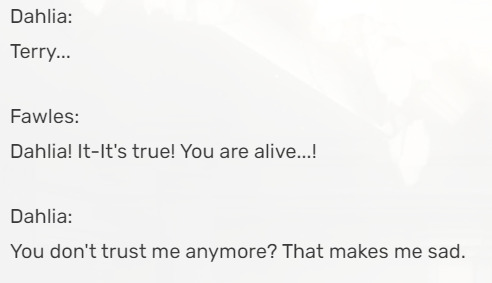

“Apollo Justice: Ace Attorney” establishes its more cynical and deconstructivist tone compared to the original trilogy in part by always putting some sort of element of distrust between the Lawyer and the Defendant. With Apollo basically unable to really have a decent conversation with any of his clients, many of them being antagonistic towards him or hiding things from him. Phoenix Wright was basically the only defendant Apollo went into court actually 100% putting his trust in him… and we all know how that worked out.
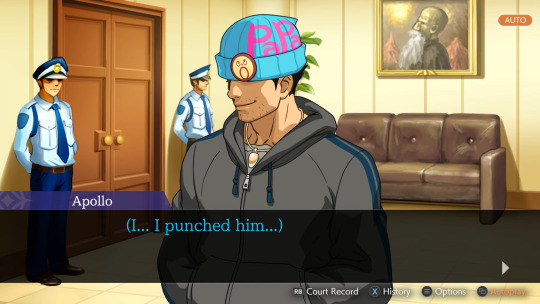
And this moment is especially effective because… if you’re playing this game unspoiled after finishing the Phoenix Wright Trilogy, you probably trust Phoenix as well! The emotions Apollo feels as he sees who Phoenix had become are meant to mirror the emotions the Player probably feels at this very moment. And the hints and questions about what Phoenix did in the trial seven years ago are a challenge to the trust of both Apollo and the Player. Both of them are stuck between what they knew of Phoenix before and the revelation of what Phoenix confessed to in “Turnabout Trump”. Apollo’s uncertainty is the player’s uncertainty as well.
And even if Apollo’s image of Phoenix is somewhat improved by “Turnabout Successions” and it’s clearly established that, no, Phoenix never knowingly used forged evidence as an attorney… There’s no big reconciliation that fixes everything like with Phoenix and Miles. It’s clear that Apollo’s sense of trust, in Phoenix Wright and in general, never quite recovered from the events of AJAA. Later games do still reiterate that he’s a lot more distrustful than other playable attorneys.

(And that’s also a point where the Player-Player Character Synergy from ‘Turnabout Trump’ kinda diverges, since I think most Players do regain their trust in Phoenix by the end of AA4 at least. Especially as unlike Apollo, we actually got to be inside his head again - that’s not exactly an experience Apollo will ever get to have. )
But, well, maybe it’s because it’s just really fresh in my mind, but I just think what ‘The Great Ace Attorney’ Duology does with this theme is just… really cool!
These games really play on the idea of challenging the trust… not just of the Player Character Ryunosuke, but also of the Player themselves. Because Ryunosuke also gets to have a Guilty Client… as his very-first actual client who is not himself. And since the game doesn’t lay on the suspicion quite as thick as with Matt Engarde, and since there’s no hostage situation of course… This plotline can have emotional synergy between the Player and the Player Character and focus a lot more about the emotional repercussion of putting your trust in someone totally absolutely unworthy of trust.
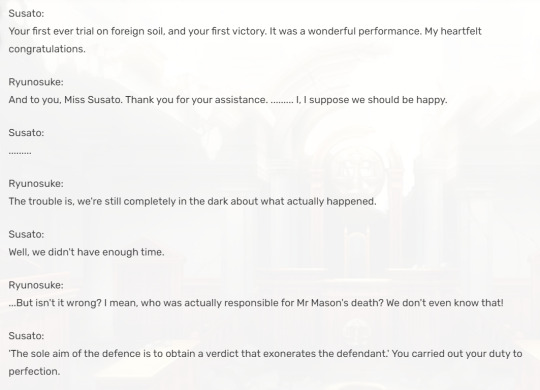
And how this betrayal of trust haunts the characters moving forwards. How Ryunosuke now finds himself being held back by his doubts due to the memories of this terrible trial, and... not necessarily a lack of trust in others as much as a lack of trust in himself. How Susato is driven to do something she considers unforgivable - tempering with the Crime Scene behind the police’s back - because that trial had made her lose trust in the entire British Justice System.

The entire climax of the first game is thus a reaffirmation of the power of trust. By unwaveringly defending Gina - a girl they have bonded with, but has also been extremely uncooperative, shady, dishonest and literally involved in what went down in the McGilded Trial, in a very grueling and seemingly unbeatable trial - Ryunosuke and Susato rediscover their ability to trust their defendant. Because, yeah, trust is a leap of faith - you never know when you’re gonna meet a McGilded or a Dahlia Hawthorne - but it’s also absolutely worth it.

And then with the themes of conspiracy strawn throughout the games and especially ramping up in the second game, that’s really kinda a thing that’s bound to sow seeds of paranoia and distrust in the Players about… all sorts of characters. Like, okay, I am fairly sure that pretty much every player who first walked into the Lord Chief Justice’s office and saw Mael Stronghart was like “Oh look! That’s the Final Boss!”. But with the hints for there being some sort of web of intrigue being hidden in the shadows, there’s plenty of other characters that skirt the line between feeling suspicious and trustworthy. The reveal that Seishiro Jigoku is actually a culprit was one of the best-done reveals in the whole franchise. And on the other hand, there are many reasons to be suspicious of Yujin due to the amount of secrets he clearly keeps, and yet he turns out to be a very straightforwardly heroic character.
And then there’s Kazuma. And Mael Stronghart might be the Obvious Final Boss to the Conspiracy and Murder Mystery parts of the game, but within this thematic throughline of the challenges of trust, Kazuma is pretty much that part’s Final Boss.
Initially designed to be someone both the characters and the players intently trust, both in terms of the meta-perspective of how he’s set up to be a kinda Mia-Miles hybrid and any Player with knowledge of the previous games will know that’s a kind of person you can rely on. And in general, even to newcomers, everything he says and does in the first two chapters of the game make him feel like just a very upstanding guy you can trust.
Then, when he comes back in the second games, he comes back with a new attitude that feels colder towards Ryunosuke (and thus the Player) and that’s also coupled with a whole bunch of mysteries about him that were hinted in the previous game, but are now coming to the forefront.
And as the Trial of Barok Van Zieks progresses, it becomes increasingly clear that Karuma has, theoretically, all the possible motivation to kill Greyson and frame Barok for it, that he was one of the last people to see Gregson before his death and that he literally brandished a sword at him. And despite how cagey and shady he acts, he still insists he never killed anyone.
And the reveal that he has knowingly participated in an assassination plot behind the backs of both Ryunosuke and Susato is bound to cause a feeling of shock, confusion and betrayal not just in these characters - but also in the Player. The Player and Player Characters are in a lot of emotional synergy through this entire Kazuma storyline. These feelings of conflict between wanting to trust Kazuma after seeing him in his best and all the mounting suspicions due to all the revelations about him are really felt by all three of us.
And in the end the challenge for Ryunosuke and Susato is not to abandon Kazuma completely, and it’s not to continue blindly trusting their old idealized view of Kazuma - it’s to face the fact that he has kinda lost his way for single-minded revenge, while also still trusting that he is deep-down the same good not-murdery man they have known him as before.
#ace attorney#the great ace attorney#great ace attorney#gyakuten saiban#dai gyakuten saiban#dai gyatuken saiban#tgaa#tgaac#tgaa2#ryuunosuke naruhodou#kazuma asogi#ryunosuke naruhodo#gaac#dgs#dgs2#dgs sherlock holmes#tgaa chronicles#tgaa 2#aa#pwaa#phoenix wright#phoenix wright ace attorney#aa meta#ace attorney meta#phoenix wright trilogy#aa trilogy#ace attorney trilogy#apollo justice ace attorney#food#phoenix wright: ace attorney
193 notes
·
View notes
Text

Frank Gehry
Dr Chau Chak Wing Building, University of Technology, Sydney, 2014
Source
#frank gehry#deconstructivism#deconstructivist architecture#architecture#architectural design#postmodern architecture#dezeen#archdaily
96 notes
·
View notes
Text
using yall as my soudn board so! remember my blood doll turned vampire idea? ye? ok so they were deemed clan malkavian the other say so!!!
for your consideration: what if they're an art conservator / historian or smth and thus their bane manifests in turning the world into art around them. like they're just out walking and suddenly ev3rything starts melting in a daliesque fashion. feeding goes sideways and their victim starts looking less and less human and more and more like a deconstructivist work. is this something 🤔
#vtm#vampire the masquerade#am i going overboard?#imagine them using premonition and its just whos afraid of red yellow and blue and they gotta interpret that
9 notes
·
View notes
Text
sorry to pull from wikipedia but tell me. tell me you could not bring derrida into this
Derrida highlights Lévi-Strauss's use of the term bricolage, the activity of a bricoleur. "The bricoleur, says Lévi-Strauss, is someone who uses 'the means at hand,' that is, the instruments he finds at his disposition around him, those which are already there, which had not been especially conceived with an eye to the operation for which they are to be used and to which one tries by trial and error to adapt them, not hesitating to change them whenever it appears necessary."[19]Bricolage becomes a metaphor for philosophical and literary critiques, exemplifying Derrida's previous argument about the necessity of using the language available.[19] The bricoleur's foil is the engineer, who creates out of whole cloth without the need for bricolage—however, the engineer is merely a myth since all physical and intellectual production is really bricolage.[20]
bdubs literally inspires such strong desire to do theory on him he's just a little guy who falls on swords!!! and it's not even the falling on swords that really makes me constantly reference piaget's stages of play development or, God forbid, semiotics! he thinks about signs and symbols and narratives so much and it makes me bark like a dog how he both explains himself and totally breezes through the actual process as if it's simply self-evident, which it is, but also. il nya pas de hors-texte is both a fundamental truth and also there has never been a minecraft man less aware that there could possibly even exist an hors-texte.
14 notes
·
View notes
